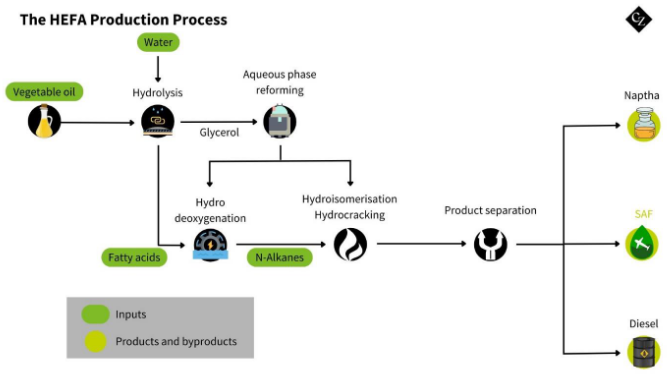Insight Focus
Despite huge government subsidies, investments by airlines and quick regulatory movement, SAF penetration remains low. So, what is holding it back? Feedstock availability and infrastructure are the two main issues.
You now know how to GUARD against a fraudulent transaction, so all should be well to fill your tanks with SAF. This is great news, especially as industry leaders have determined that SAF is one of the key drivers to decarbonization of aviation (perhaps even the only driver for long-haul flight). So why isn’t SAF being delivered at scale? Here we try and answer this question.
Structural SAF Issues
Is there a lack of SAF because it is more expensive and so uneconomic for airlines to purchase? Yes, it is more expensive but if all airlines are faced with the same cost issues, then the economic strain doesn’t discriminate. Higher fuel prices mean higher operating costs, but this will likely feed straight through to ticket prices. So, price is a disadvantage but doesn’t explain the lack of SAF in the fuel pool.
Is it because the technology doesn’t exist to produce SAF? As we have seen, there is plenty of mature technology as well as new process routes for producing SAF, so this doesn’t explain the shortfall between demand and supply. We have eight approved routes, plus coprocessing, with more in the pipeline, so the science is understood and available.

Is it because the technical authorities have been slow to approve technologies? Again, not so. The Fischer Tropsch process, for example, has been approved for decades, the HEFA process more recently and subsequent pathways in the last few years, so there is no shortage or tardiness on the part of the technical bodies.
Is it because the regulatory bodies have been slow to incentivise or mandate SAF usage? Again, no. The US for example has provided incentives for the manufacture and use of SAF and the EU has set onerous targets for SAF in the jet fuel pool. So that’s all good.
Is it because the certification bodies have created confusion with a multiplicity of different schemes that differ in the interpretation and quantification of carbon reduction? This is a niggle but doesn’t explain the shortfall in SAF.
SAF Requires More Feedstock
No, the answer to the question of why SAF isn’t widely available is that there isn’t enough feedstock and, part of the same problem, there aren’t enough processing plants near the feedstock.
Most SAF today is produced via the HEFA process. Why? Because it’s the easiest way to make it.
 3333
3333
The feedstock — vegetable oil or used cooking oil (UCO) — is energy-rich and so the processing to jet fuel or renewable diesel is straightforward. Chemically, the feedstock is mostly carbon and hydrogen with a little bit of oxygen, the latter being processed out with hydrogen, and so the processing route isn’t complex.
Of course, it has some drawbacks. While the decarbonization benefit is real, it may be lower than other pathways. The UCO is also useful elsewhere, as animal feed, and so fuel-food competition is a massive disadvantage.
Other feedstocks, such as agricultural waste, are less energy dense and producing jet fuel is more difficult and so the ratio of feedstock to fuel drops markedly. That’s why it is important to build the processing plant near the feedstock source. After all, moving large quantities of material that is going to waste isn’t efficient.

So, not enough feedstock and a lack of nearby processing capacity explain why there isn’t enough SAF.
Next time we look forward to how the industry hopes to solve this problem.













